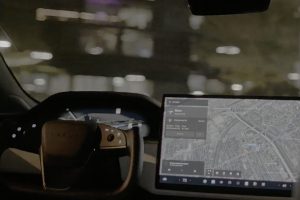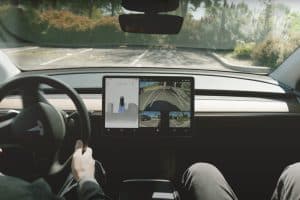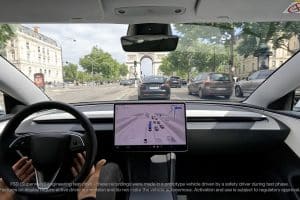- 🚗 Tesla has released a new promotional video showcasing the FSD (Supervised) system’s capabilities.
- 🌆 FSD (Supervised) can navigate complex city scenarios with minimal human intervention.
- ⚠️ A disclaimer emphasizes that drivers must remain attentive and ready to take control.
- 🧙 Elon Musk describes driving with FSD (Supervised) as feeling like “magic”.
- 📊 Tesla faces mixed online reactions, highlighting some users’ frustration over the rollout.
- 💻 Investment in FSD is significant, with the Cortex cluster and upcoming Dojo supercomputer.
Tesla’s journey into the realm of autonomous driving continues to evolve, capturing the attention of both enthusiasts and critics alike. The latest promotional video showcasing Tesla’s Full Self-Driving (FSD) Supervised system has sparked conversations across the automotive and tech landscapes. As Elon Musk himself describes this experience as “magic,” it’s clear that Tesla is pushing boundaries while generating diverse opinions. In this blog post, we’ll delve into the implications of Tesla’s recent FSD advancements, the technology behind these innovations, and the challenges and opportunities they present.
A New Era of Driving: Tesla’s FSD Supervised
What is FSD Supervised?
Tesla’s FSD Supervised is an advanced driver-assistance feature designed to navigate complex urban environments with minimal driver intervention. The system utilizes a combination of cameras, sensors, and artificial intelligence to process real-time data, making split-second decisions that allow the vehicle to maneuver through inner-city streets and handle scenarios like detours, tight gaps, and unprotected turns.
Promotional Video Highlights
The recently released promotional video illustrates the capabilities of FSD Supervised, showcasing a Tesla vehicle gracefully navigating intricate city landscapes. This visual representation aims to demonstrate the progress made in autonomous technology and entice potential users, emphasizing the system’s potential to transform everyday commuting into an effortless experience.
The Magic and Machinery Behind FSD
Elon Musk’s Vision
Elon Musk, Tesla’s CEO, often shares his enthusiasm for FSD technologies, describing the driving experience as “magic.” This description encapsulates his vision of a future where transportation is revolutionized by fully autonomous vehicles that operate seamlessly without human input.
Technical Underpinnings
- Cameras and Sensors: Tesla’s vehicles are equipped with an array of cameras and sensors that provide a 360-degree view of the surroundings, crucial for real-time decision-making.
- Artificial Intelligence: The FSD system leverages advanced AI algorithms to learn from vast amounts of data, enabling the vehicle to predict and react to various driving conditions.
- Supercomputing Power: Tesla invests heavily in supercomputing capabilities with projects like the Cortex cluster and the Dojo supercomputer. These investments are critical in processing large datasets required for improving the FSD technology.
Online Reactions: Praise and Critiques
Mixed Reactions from the Public
Tesla’s bold steps in releasing promotional content showcasing FSD Supervised have received mixed reactions online. While some users praised the technology’s potential, others expressed frustration, notably those who have not yet received the latest software updates in their vehicles. This highlights the challenges Tesla faces in managing customer expectations while rolling out progressively sophisticated features.
The Importance of User Awareness
Tesla includes a crucial disclaimer in its promotions: drivers must remain attentive and ready to take control at any time. As technology advances, it’s vital for users to understand their role in this transitional phase of automotive autonomy.
Tesla’s Strategic Investments
Building the Future with Supercomputing
Tesla’s continuous investment in its supercomputing infrastructure underscores the company’s commitment to leading the autonomous driving frontier. Projects such as the Cortex and Dojo supercomputers not only enhance the processing capabilities of FSD but also pave the way for future innovations like the dedicated Robotaxi service.
The Road Ahead
- Technical Challenges: Overcoming the hurdles of fully autonomous technology involves addressing edge cases and ensuring the system’s reliability in diverse environments.
- Regulatory Landscape: Navigating the complex web of regulations governing autonomous vehicles remains a significant challenge for Tesla and the broader industry.
- Consumer Adoption: Building trust with consumers through transparency and consistent performance is essential for widespread adoption of autonomous vehicles.
Conclusion
Tesla’s FSD Supervised system represents a significant leap forward in the quest for autonomous vehicles, embodying both the magic of innovation and the intricate machinery that makes it possible. While challenges remain, the investment in technology and strategic planning positions Tesla as a formidable player in the future of transportation. As more autonomous features roll out, the journey towards a driverless future becomes increasingly tangible.





